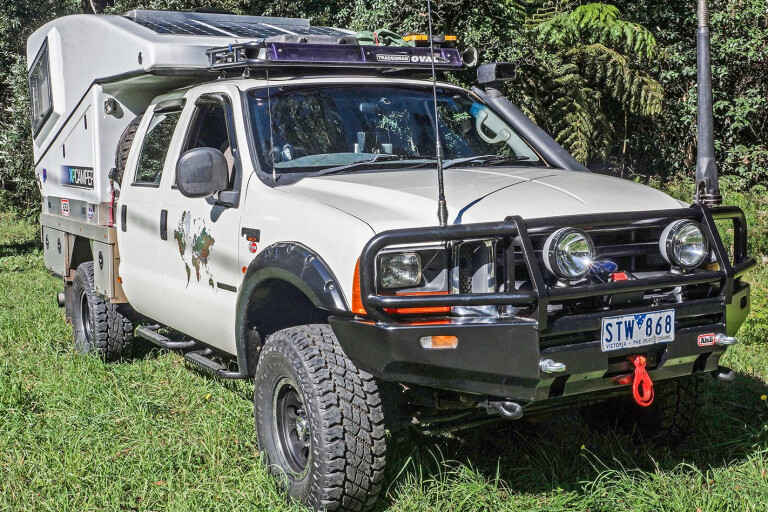
Anybody who says the sizeable Ford F250 isn’t a good Aussie touring vehicle hasn’t spoken to Neil or Helen Cocks about their well-set-up rig.
Bought brand new in 2004 when Ford was still converting the full-size pick-up (as the Yanks called them) for the Aussie market, the Ford has since been all over Australia, from the Victorian High Country to cross country desert trips in the Gibson and Great Sandy Desert. For a few years it wandered the world, overlanding across Africa, Europe, Russia and the Americas, before coming back ‘Down Under’ for more outback travels.
 Powered by the old 7.3-litre V8 turbo-diesel engine with a Super Chip for even more torque than standard and a Banks exhaust for better breathing (and just a lovely note when it’s used in anger), the engine is hardly run-in despite having 400,000km on the clock.
Powered by the old 7.3-litre V8 turbo-diesel engine with a Super Chip for even more torque than standard and a Banks exhaust for better breathing (and just a lovely note when it’s used in anger), the engine is hardly run-in despite having 400,000km on the clock.
The gearbox has been rebuilt and strengthened by Wholesale Automatics in Bayswater, while the diffs have had ARB air lockers fitted front and rear. An alloy Mag-Hytec diff cover on the rear and an ARB diff cover on the front axle not only improves cooling but also adds more oil capacity to both diffs.
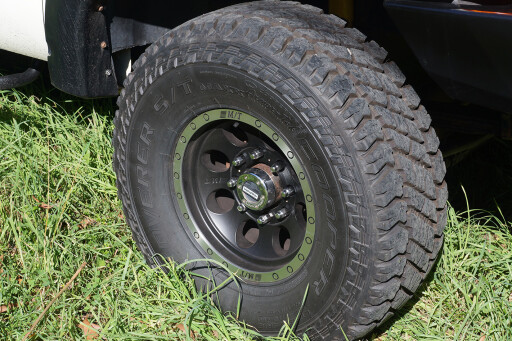 OME springs with OME shocks grace each corner, while 35-inch Cooper ST Maxx tyres are fitted to 16-inch alloy wheels – the tyres specifically chosen for their weight-carrying capability, in this case 1750kg per corner.
OME springs with OME shocks grace each corner, while 35-inch Cooper ST Maxx tyres are fitted to 16-inch alloy wheels – the tyres specifically chosen for their weight-carrying capability, in this case 1750kg per corner.
Red Line oils are used throughout and, with the standard oil filter, engine oil changes have been extended to around 40,000km, meaning the Ford doesn’t need an oil change when on its annual long distance outback trip.

Inside the cab, a plethora of electronic gear graces the dash, including an ARB reversing camera, a Garmin Nuvi, an iPad running Hema’s latest mapping software, a tyre monitor, and a ScanGauge to keep track of tyre air pressures and engine electronics. A Codan HF radio and a GME UHF radio round out the navigation and communication wares.
For outback work, the rear seats have been removed and replaced by a huge storage box, while on the roof is a Tradesman Oval alloy roof rack. Tucked into the edge of the rack and barely visible is a set of impressive air horns that would make most locomotives envious.
 However, it’s at the back-end where the Ford is vastly different, with a new 2450mm custom alloy tray that features four storage boxes, one for each corner, and a huge drawer in the centre that’s good for recovery gear and some tools.
However, it’s at the back-end where the Ford is vastly different, with a new 2450mm custom alloy tray that features four storage boxes, one for each corner, and a huge drawer in the centre that’s good for recovery gear and some tools.
Acting as a spacer between the tray and the bottom of the camper (to lift the camper high enough to clear the roofline of the cab) are two drawers which again add to the storage capability of this rig. All of that storage gets used, and Neil is known for his ability to roll out a veritable workshop when the situation demands it.
Under the tray are two 30-litre water tanks to back up the 100-litre water tank installed on the slide-on camper. Two spare tyres and two sets of MaxTrax, along with a long-handle shovel, are tucked in between the vehicle cab and the camper and are within easy reach.
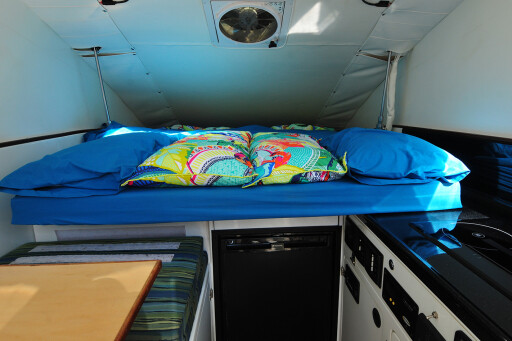 The impressive camper on the back is a V2 model XPCamper imported from the USA, where it has been designed and built since its inception seven years ago. In fact, Neil had one of the first models – a V1 XP Camper – for a few years, but decided it was too big, too long and too heavy for the touring he likes to do. When the V2 version came along, he swooped on it.
The impressive camper on the back is a V2 model XPCamper imported from the USA, where it has been designed and built since its inception seven years ago. In fact, Neil had one of the first models – a V1 XP Camper – for a few years, but decided it was too big, too long and too heavy for the touring he likes to do. When the V2 version came along, he swooped on it.
This unit features the most modern construction techniques and materials, and the seamless shell of the XPCamper is both extremely light and exceptionally strong. The hard-sided monocoque construction combines a moulded composite-over-foam core wrapped with hand-laid unidirectional fiberglass, reinforced with carbon-fibre.
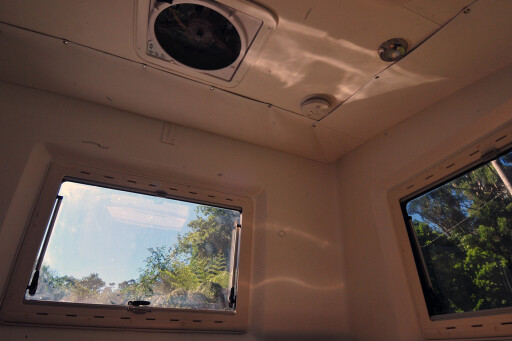 This unique self-supporting design is stronger, lighter and provides better thermal and acoustical insulation than a traditional internal frame camper, and the unit has proven to be dustproof and durable.
This unique self-supporting design is stronger, lighter and provides better thermal and acoustical insulation than a traditional internal frame camper, and the unit has proven to be dustproof and durable.
The hard-sided pop-up roof is powered by a hydraulic drive which lifts the roof easily and quickly. It has both a remote controller (although Neil prefers to use the on-board control unit) and an emergency wind-up. There are two six-volt heavy duty 150AH batteries used to store the power from the outstanding 360-watt solar panels.
 Inside the camper is a queen-size bed, which needs minimal preparation to sleep in. The 50mm foam mattress uses a Froli Star Base, which is an impressive box spring system that acts as an independent spring mattress and works a treat. More storage is located beneath the bed.
Inside the camper is a queen-size bed, which needs minimal preparation to sleep in. The 50mm foam mattress uses a Froli Star Base, which is an impressive box spring system that acts as an independent spring mattress and works a treat. More storage is located beneath the bed.
Importantly, there is a 130-litre Dometic fridge/freezer, a Webasto heater for cold nights and a diesel-powered cooktop and water heater. An integrated sink, foldable taps and glass lid finish off the kitchen attire. The dining table and seating can be converted to a small bed if required and can handle two people with ease. Even more storage can be found under the seats.
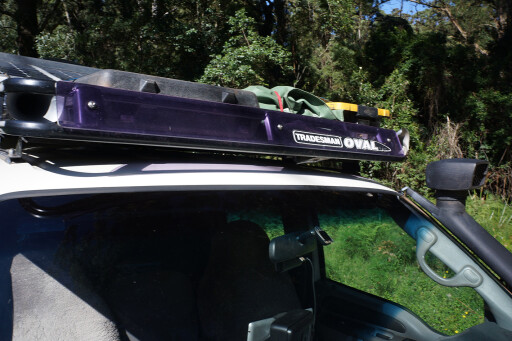 At first you’d think ventilation may be a little wanting, but insulation of the camper and the roof is exceptional, with Neil commenting on how good the camper is on hot days. Two reversible electric roof vents and three dual-pane windows help in this regard. Electric power and water can be monitored and controlled from inside the camper, and all wiring is marine-grade and to Australian specifications.
At first you’d think ventilation may be a little wanting, but insulation of the camper and the roof is exceptional, with Neil commenting on how good the camper is on hot days. Two reversible electric roof vents and three dual-pane windows help in this regard. Electric power and water can be monitored and controlled from inside the camper, and all wiring is marine-grade and to Australian specifications.
 A friend was so impressed with Neil’s unit, they ordered another similar one from the US, so now there are two XPCampers wandering the outback.
A friend was so impressed with Neil’s unit, they ordered another similar one from the US, so now there are two XPCampers wandering the outback.
As we write this, the big Ford and camper are travelling the beaches of South Australia, heading to Twilight Cove and then onto Israelite Bay and Esperance in Western Australia, before heading into red sand country. Whoever said big isn’t good off-road?

COMMENTS